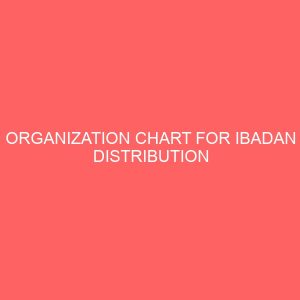Description
ABSTRACT
Uninterruptible power supplies UPS are used to provide power when regular utility power is unavailable. Although they are commonly used for providing power in remote locations or emergencies, this is not because they are the same as auxiliary power units, emergency power units or standby generators. Unlike the aforementioned power sources, UPS provides an immediate and continuous supply of power to a device, hence protecting it from power interruption and allowing time for auxiliary or emergency powers, to kick in equipment to be safely shut down or utility power restored. The major aim of this was to design a system which will be able to convert a UPS system to a sine wave inverter. The sine wave inverter unlike the UPS provides a delay when power outage occurs. This delay in supply is acceptable for loads like lightening points, fans etc. but completely unacceptable for sensitive equipment like computers and printers. This delay may cause loss of data.
CHAPTER ONE
1.0INTRODUCTION
The most recent advancement in technology has really given birth to different development in the field of engineering. Provision has been made by technologist who covers a wide range of humans environment, given solution to humans problems.
In the recent times, power supply has been epileptic in the country which has really affected consistent power source. Many power systems were found to be able to maintain power supply to the load during mains failure PHCN. Most of these loads were designed so that electrical supply to them should be maintained without interruption. Electricity can be generated by devices to convert some readily available sources of energy since electricity generation can be interrupted at any time as a result of fault and all electronic devices need an alternating current , the use of an inverter to utilize an alternative source of energy becomes so necessary.
An inverter is an electronic device which converts DC energy to AC energy. Thus, the technological breakthrough resulting to the production of this system has encouraged the optimum utilization of computers and related equipment’s. The beauty of inverter system is the fact that it accepts all the power anomalies, conditions and filters properly the public power supply output to most load which require pure grade sinusoidal voltage rated output. They are used in a wide variety of applications such as the complicated electronic systems of orbiting satellite and cool astronaut suites. Inverters are also used to operate gyroscope and other air borne instruments. Due to low voltage power sources such as solar cells, nuclear cells, and fuel cells, inverters has become increased in demand.
The system is unaffected by variation in the mains supply and during the period of power failure will continue to supply to the load for a specified duration. Modern DC to AC inverters is reliable and requires less maintenance
DC and AC Current
In the world today there are currently two forms of electrical transmission, Direct Current DC and Alternating Current AC, each with its own advantages and disadvantages. DC power is simply the application of a steady constant voltage across a circuit resulting in a constant current. A battery is the most common source of DC transmission as current flows from one end of a circuit to the other. Most digital circuitry today is run off of DC power as it carries the ability to provide either a constant high or constant low voltage, enabling digital logic to process code executions. Historically, electricity was first commercially transmitted by Thomas Edison, and was a DC power line. However, this electricity was low voltage, due to the inability to step up DC voltage at the time, and thus it was not capable of transmitting power over long distances.
V IR
PIV I2R
As can be seen in the equations above, power loss can be derived from the electrical current squared and the resistance of a transmission line. When the voltage is increased, the current decreases and concurrently the power loss decreases exponentially; therefore high voltage transmission reduces power loss. For this reasoning electricity was generated at power stations and delivered to homes and businesses through AC power. Alternating current, unlike DC, oscillates between two voltage values at a specified frequency, and its ever changing current and voltage makes it easy to step up or down the voltage. For high voltage and long distance transmission situations, all that is needed to step up or down the voltage of the transformer. Developed in 1886 by William Stanley Jr., the transformer made long distance electrical transmission using AC power possible.
Electrical transmission has therefore been mainly based upon AC power, supplying most Nigerian homes with a 220 volt AC source. It should be noted that since 1954 there have been many high voltage DC transmission systems implemented around the globe with the advent of DC/DC converters, allowing the easy stepping up and down of DC voltages. Like DC power, there exist many devices such as power tools, radios and TVs that run off of AC power.
It is therefore crucial that both forms of electricity transmission exist; the world cannot be powered with one simple form. It then becomes a vital matter for there to exist easy ways to transform DC to AC power and vice versa in an efficient manner. Without this ability people will be restricted to what electronic devices they use depending on the electricity source available. Electrical AC/DC converters and DC/AC inverters allow people this freedom in transferring electrical power between the two.
Offline / standby








Reviews
There are no reviews yet.